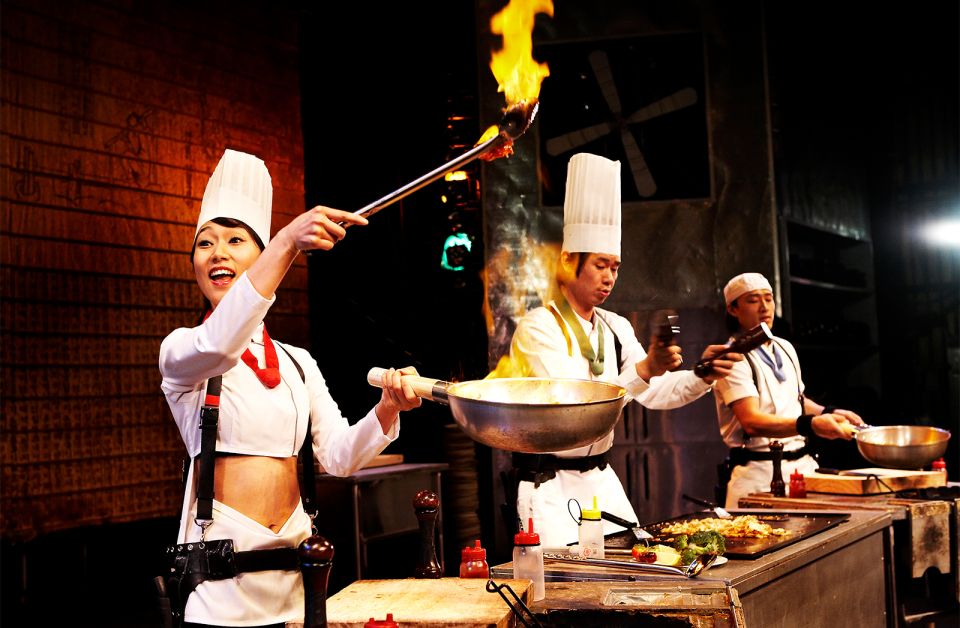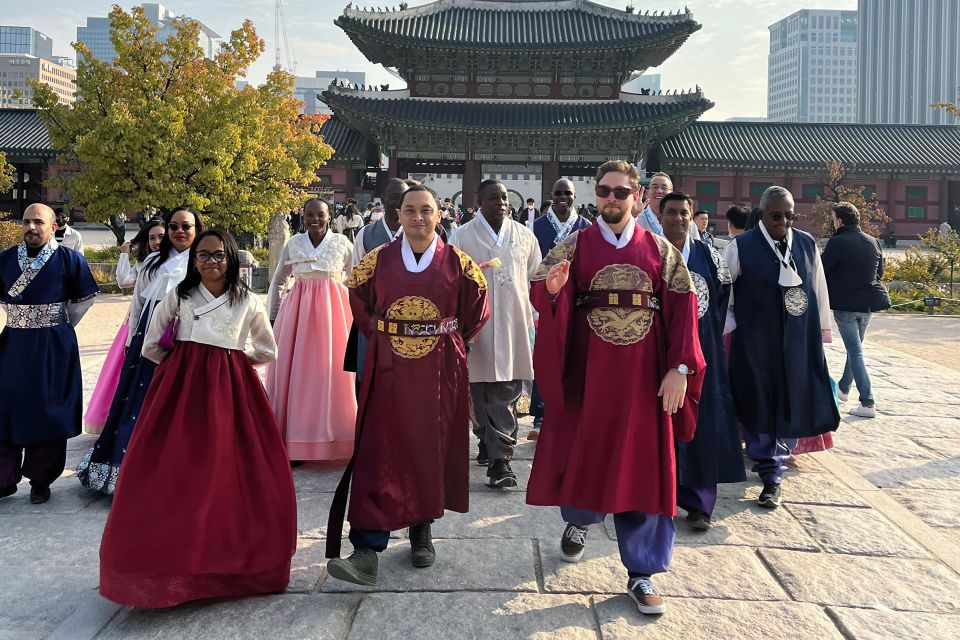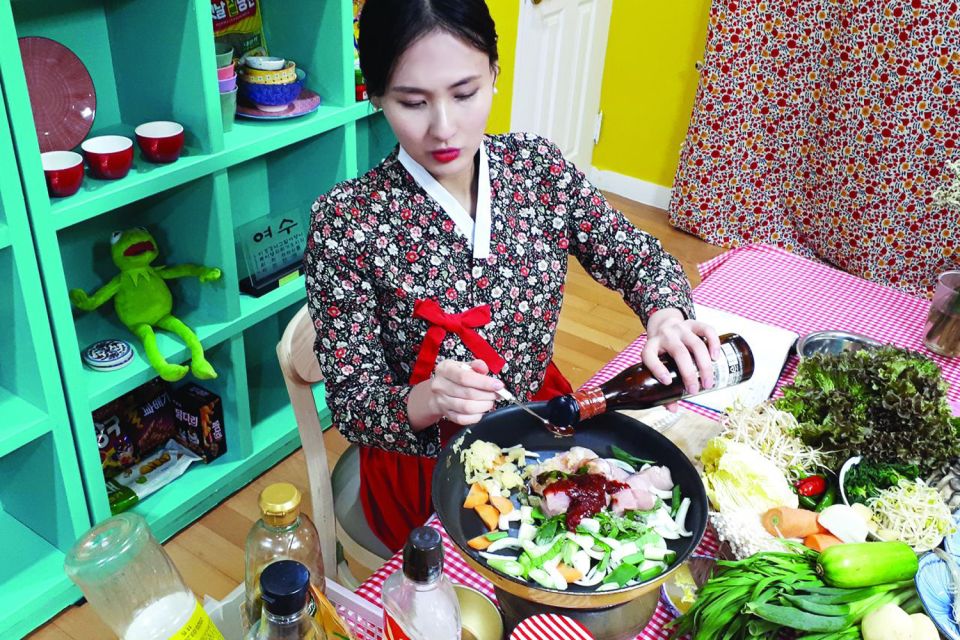Seoul
La capitale sud-coréenne, Séoul (서울 en coréen), est une ville de contrastes étonnants où l’ultramoderne cohabite avec l’ancestral, offrant aux voyageurs une expérience unique. Ce guide complet vous invite à explorer les multiples facettes de Séoul, en mettant en lumière son histoire, ses sites incontournables, et bien plus encore, pour faire de votre voyage une aventure mémorable.
Séoul, avec ses 9,5 millions d’habitants, est le cœur battant de la Corée du Sud. La ville se dresse comme un phare de modernité, entourée de montagnes et divisée en deux par le majestueux fleuve Han. C’est un lieu où l’histoire ancienne et l’innovation se rencontrent, créant un tissu urbain riche et diversifié.

The History of Seoul
Découvrir l’histoire de Séoul, c’est comme ouvrir un livre dont chaque page raconte une époque différente, un événement marquant qui a contribué à façonner l’identité complexe et riche de cette métropole. La ville, aujourd’hui vibrant cœur de la Corée du Sud, porte en elle les cicatrices et les triomphes de millénaires d’histoire.
Ancient Origins: Wiryeseong, the First Chapter
La première mention de Séoul remonte à la période des Trois Royaumes de Corée, spécifiquement au royaume de Baekje, l’un des berceaux de la civilisation coréenne. À cette époque, la ville était connue sous le nom de Wiryeseong. Il est fascinant de constater que, même à ses débuts, Séoul était un centre de pouvoir et de culture, une tradition qui se perpétue jusqu’à nos jours.
La Dynastie Joseon : Un Âge d’Or Culturel
La fondation de la dynastie Joseon en 1392 marque un tournant décisif dans l’histoire de Séoul. La ville, alors appelée Hanyang, devient la capitale du royaume. C’est durant cette période que Séoul commence à se développer en tant que centre politique, économique et culturel. La construction de palais majestueux et de jardins harmonieux, comme ceux du palais Gyeongbokgung, témoigne de l’importance accordée à l’art, à la culture et à l’architecture. La dynastie Joseon est également célèbre pour l’introduction de l’Hangul, l’alphabet coréen, par le roi Sejong le Grand, une révolution dans l’accès à l’éducation et à la littérature pour le peuple coréen.
L’Ère de l’Occupation Japonaise : Une Période Sombre
L’occupation japonaise de la Corée, de 1910 à 1945, représente une des périodes les plus sombres de l’histoire de Séoul. La ville, rebaptisée Gyeongseong, subit de profondes transformations sous l’administration coloniale japonaise. Cette époque est marquée par la perte de l’indépendance nationale et par une répression culturelle sévère. Cependant, elle est également une période de modernisation forcée, qui a vu l’introduction de nouvelles technologies et infrastructures. La résilience du peuple coréen face à cette oppression a forgé un sentiment national fort, qui a été crucial pour la reconstruction du pays après la libération.
The Korean War and Seoul's Renaissance
La guerre de Corée, de 1950 à 1953, est un autre moment décisif pour Séoul, la ville se trouvant à plusieurs reprises sur la ligne de front du conflit entre le Nord communiste et le Sud capitaliste. La capitale est gravement endommagée, et sa population connaît de grandes souffrances. Pourtant, c’est aussi le début d’une étonnante période de renaissance pour Séoul. Dans les décennies qui suivent l’armistice, la ville connaît un développement économique fulgurant, propulsant la Corée du Sud parmi les économies les plus dynamiques du monde.
Séoul Aujourd’hui : Un Symbole de Progrès et d’Innovation
Aujourd’hui, Séoul est une métropole mondiale, reconnue pour son innovation dans les domaines de la technologie, de l’éducation et de la culture. La ville est un mélange harmonieux de l’ancien et du nouveau, où des palais historiques se dressent à côté de gratte-ciels futuristes. Séoul continue de surprendre et de fasciner, attirant des millions de visiteurs désireux d’explorer son riche patrimoine et sa modernité éblouissante.
When to go to Seoul?
The city of Seoul, with its temperate climate, offers a different face to each season, each revealing unique aspects of the South Korean capital. Deciding the best time to visit Seoul depends largely on what you want to see and do. Here's a season-by-season guide to help you plan your trip.
Spring in Seoul: An Explosion of Colors
Le printemps, s’étendant de fin mars à mai, est sans doute l’une des meilleures périodes pour visiter Séoul. La ville s’éveille sous un tapis de fleurs de cerisier, de forsythias et d’azalées. Les parcs et les temples se parent de couleurs vives, offrant des cadres parfaits pour des promenades et des pique-niques sous les arbres en fleurs. Les températures sont douces, oscillant entre 10°C et 20°C, ce qui rend la découverte de la ville particulièrement agréable. Ne manquez pas le Festival des cerisiers en fleurs de Yeouido, où des centaines d’arbres bordent les rues, créant des allées spectaculaires.
L’Été à Séoul : Vibrant mais Humide
De juin à début septembre, Séoul entre dans sa saison estivale, caractérisée par une chaleur et une humidité marquées. Les températures grimpent souvent au-dessus de 30°C, accompagnées de fortes pluies, surtout en juillet et août. Si la chaleur ne vous décourage pas, l’été est une saison pleine de vie, marquée par de nombreux festivals et événements en plein air. C’est également le moment idéal pour découvrir les plages proches de Séoul ou les parcs aquatiques pour se rafraîchir. Les soirées d’été offrent un répit agréable, avec une multitude d’activités nocturnes animant la ville.
L’Automne à Séoul : La Magie des Feuilles Rouges
L’automne, de septembre à novembre, est une autre période privilégiée pour explorer Séoul. La chaleur de l’été fait place à un air frais et clair, et les feuillages se transforment, revêtant des teintes spectaculaires de rouge, d’orange et de jaune. Les températures varient généralement de 10°C à 20°C, créant des conditions idéales pour la randonnée dans les parcs nationaux environnants ou la visite des palais royaux de la ville. Les festivals d’automne, comme celui de Jongmyo Jerye, offrent un aperçu fascinant des traditions coréennes dans un cadre naturel époustouflant.
L’Hiver à Séoul : Un Paysage Enneigé et Festif
De décembre à février, l’hiver enveloppe Séoul d’un manteau blanc, avec des températures pouvant descendre en dessous de zéro. C’est le moment parfait pour les amateurs de sports d’hiver, avec plusieurs stations de ski accessibles à courte distance de la ville. Séoul se transforme en un paysage hivernal enchanté, avec des illuminations festives et des marchés de Noël. Bien que le froid puisse être mordant, l’expérience de voir la ville sous la neige, surtout les jardins des palais et les temples, reste inoubliable.
Conclusion: The best time to visit Seoul
Ultimately, whether you go away for a week, deux semaine ou 1mois à Séoul le printemps et l’automne se détachent comme les saisons les plus recommandées pour visiter Séoul, grâce à leur climat modéré et leur beauté naturelle. Cependant, chaque saison apporte son lot de charmes et d’activités, permettant à Séoul de séduire ses visiteurs tout au long de l’année. Peu importe quand vous décidez de partir, Séoul vous promet des souvenirs mémorables et des découvertes fascinantes.
Seoul weather live!
Getting around Seoul
Séoul est une métropole où la modernité et l’efficacité se reflètent parfaitement dans son système de transport. Que vous soyez un visiteur pour la première fois ou un habitué, naviguer dans cette ville dynamique est une expérience en soi, grâce à une infrastructure de transport en commun bien conçue et à des options de mobilité variées.
The Seoul Metro: The Heart of the Transport Network
Le métro de Séoul est souvent salué comme l’un des systèmes de transport en commun les plus avancés et les plus propres au monde. Avec plus de 20 lignes s’étendant à travers la ville et au-delà, le métro offre une couverture complète et permet d’accéder facilement aux principales attractions, quartiers d’affaires, et zones résidentielles. Les trains sont fréquents, ponctuels et équipés de la climatisation, avec des annonces et des panneaux d’information en coréen et en anglais. Les plans des lignes, clairement indiqués dans chaque station, simplifient la planification de vos déplacements. Pour une utilisation encore plus facile, pensez à acquérir une carte T-money, rechargeable et utilisable sur l’ensemble du réseau de transport en commun.
Seoul Buses: A Flexible Alternative
Seoul's bus network perfectly complements the metro, serving areas less accessible by the latter. With local routes, express buses and special tourist circuits, the bus system is both flexible and economical. Buses are an excellent option for admiring the city from above ground, offering unique perspectives on everyday life in Seoul. As with the subway, the T-money card facilitates payments and transfers between bus and subway.
Cabs: Comfort and Accessibility
Visit taxis à Séoul sont une option pratique et relativement abordable pour les déplacements nécessitant plus de flexibilité. Disponibles à toute heure, ils sont particulièrement utiles tard le soir, lorsque le métro et les bus réduisent leurs services. Les taxis coréens sont sûrs et les chauffeurs, bien que ne parlant pas toujours anglais, sont aidés par des applications de traduction et des systèmes de navigation pour vous mener à destination sans encombre.
Rent a Bike: Discover Seoul at a Different Pace
Pour ceux qui cherchent à explorer Séoul d’une manière plus intime et active, la location de vélos est une excellente option. Le service de partage de vélos, Seoul Bike « Ddareungi », permet aux utilisateurs de louer et de retourner des vélos dans des centaines de stations réparties dans toute la ville. Longer les rives du fleuve Han à vélo est une expérience particulièrement agréable, offrant des vues imprenables sur la ville et un accès à des parcs et des espaces de loisirs en plein air.
Practical Tips for Navigating in Seoul
- Download transport apps: Apps like KakaoMetro and KakaoBus provide real-time information on timetables, routes and stations, greatly simplifying your commute.
- Investissez dans une carte T-money : Disponible dans les kiosques à journaux et les stations de métro, cette carte rechargeable vous permet de voyager facilement sur l’ensemble du réseau de transport.
- Explore on foot: Seoul is a city full of surprises. Time permitting, walking between nearby sites can reveal hidden treasures.
Grâce à ces multiples options de transport, se déplacer à Séoul est non seulement pratique mais aussi une partie intégrante de l’expérience de découverte de cette ville fascinante. Que vous préfériez la rapidité du métro, la flexibilité des bus, le confort des taxis, ou la liberté du vélo, Séoul vous connecte à ses merveilles avec une facilité déconcertante.
Where to sleep in Seoul?
Séoul propose une gamme variée d’hébergements, des guesthouses conviviales aux hôtels de luxe. Pour un séjour authentique, envisagez de séjourner dans un hanok, une maison traditionnelle coréenne. Les quartiers de Hongdae et Itaewon sont parfaits pour ceux qui recherchent une expérience plus animée.

Seoul's must-sees
Séoul, une ville où le passé rencontre le présent dans une harmonie fascinante, regorge de sites emblématiques qui méritent une place de choix dans l’itinéraire de tout visiteur. Voici une exploration plus approfondie des joyaux culturels et historiques de la ville.

Myeongdong Nanta Theater show
Experience the drama and comedy of South Korea's longest-running production, and be dazzled by the dynamic culinary talents of the must-see Nanta show at Seoul's Myeongdong Nanta Theater.

City highlights, palace tour and Hanbok option
Step back in time at Gyeongbokgung Palace and Bukchon Hanok Village on this guided walking tour of Seoul. Choose a tour with or without Hanbok, and enjoy delicious snacks along the way.
Gyeongbokgung Palace: A Journey through Time
Visit Gyeongbokgung Palace n’est pas seulement le plus grand des cinq palais royaux de Séoul; il est aussi le plus majestueux. Fondé en 1395 par le roi Taejo, le fondateur de la dynastie Joseon, ce palais était le cœur administratif et le symbole de l’autorité royale. Aujourd’hui, après plusieurs reconstructions, il se dresse comme un rappel puissant de l’histoire et de la culture coréennes. Ne manquez pas la relève de la garde, une reconstitution colorée et précise qui se déroule à l’entrée principale du palais. Les jardins tranquilles, les pavillons élégants et les vastes cours offrent un aperçu fascinant de l’architecture traditionnelle coréenne et invitent à la contemplation.
Village of Bukchon Hanok: Immersion in Tradition
Located between Gyeongbokgung and Changdeokgung, the village of Bukchon Hanok est un trésor caché de Séoul, composé de ruelles sinueuses et de maisons traditionnelles hanok. Cette zone résidentielle historique offre un contraste saisissant avec les gratte-ciels modernes de la ville. Se promener à Bukchon, c’est comme se promener dans un tableau vivant de la Corée d’autrefois. Les visiteurs peuvent non seulement admirer l’architecture, mais aussi participer à des ateliers d’artisanat, tels que la fabrication de hanji (papier traditionnel coréen) ou l’apprentissage de la cérémonie du thé coréenne, pour une expérience culturelle authentique.
N Seoul Tower: A Panoramic View of the Metropolis
Erected on Mount Namsan, the N Seoul Tower est bien plus qu’une simple tour de transmission; c’est un symbole de Séoul. Accessible par bus, voiture ou via une agréable randonnée à travers le parc Namsan, la tour offre une plateforme d’observation d’où l’on peut jouir d’une vue à 360 degrés sur la ville. Que vous y alliez de jour pour observer le dynamisme urbain ou de nuit pour un spectacle de lumières scintillant, la N Séoul Tower promet des souvenirs inoubliables. La tradition des cadenas d’amour, où les couples accrochent un cadenas gravé de leurs noms sur la terrasse, ajoute une touche romantique à votre visite.
Tips for exploring these must-see sites
- Planifiez votre visite : Gyeongbokgung et d’autres palais ferment un jour par semaine (généralement le mardi), alors vérifiez les horaires à l’avance.
- Wear comfortable shoes: Whether you're exploring the vast grounds of Gyeongbokgung or strolling through the narrow streets of Bukchon, comfortable shoes are essential.
- Profitez des visites guidées : De nombreux sites proposent des visites guidées gratuites ou à petit prix en anglais, offrant des insights riches sur l’histoire et la culture coréennes.
- Respect the area: Bukchon Hanok Village is first and foremost a residential area. Show respect for residents and their property when you visit.
Are you heading to Seoul soon, or are you already here and looking for things to do? We've put together a complete guide to what to do in Seoul!
Seoul's Best Neighborhoods
Seoul is a mosaic of neighborhoods, each with its own unique character and atmosphere. Exploring these neighborhoods is essential to capturing the city's diversity.
Hongdae: Young and Vibrant
Hongdae, nommé d’après l’Université Hongik, est le cœur de la culture jeune et créative de Séoul. Réputé pour sa scène musicale underground, ses boutiques de mode indépendantes, et son art de rue dynamique, Hongdae est l’endroit idéal pour ressentir l’énergie jeune de la ville. La nuit, le quartier s’anime avec des bars, des clubs et des restaurants offrant une expérience nocturne sans pareil.
Insadong: Tradition and Culture
Insadong est le quartier culturel de Séoul, célèbre pour ses galeries d’art, ses boutiques d’antiquités et ses maisons de thé traditionnelles. C’est le lieu idéal pour acheter des souvenirs authentiques, comme de la céramique, des peintures et des objets artisanaux. Les ruelles d’Insadong grouillent d’activité, offrant un aperçu charmant des traditions coréennes au cœur de la ville moderne.
Itaewon: Diversity and Internationalism
Itaewon est connu pour son ambiance cosmopolite et sa diversité culinaire. C’est le quartier international de Séoul, où expatriés et touristes se mêlent aux locaux pour profiter de restaurants, de bars et de boutiques du monde entier. Itaewon est également célèbre pour sa vie nocturne animée et ses événements culturels, ce qui en fait un lieu de rencontre pour ceux qui cherchent à expérimenter un Séoul plus global.
Gangnam: Chic and Trendy
Popularized by the song "Gangnam Style", this district is synonymous with luxury and modernity. Gangnam is the center of fashion, commerce and entertainment in Seoul, home to luxury boutiques, impressive skyscrapers and avant-garde cultural spaces. For those seeking glamour and urban chic, Gangnam offers an unrivalled shopping and entertainment experience.
Chaque quartier de Séoul a sa propre histoire à raconter, et les explorer est une partie intégrante de l’expérience de la ville. Que vous soyez attiré par l’histoire et la tradition ou par la modernité et l’innovation, Séoul a un quartier qui répondra à vos attentes.
Séoul se trouve dans le fuseau horaire UTC+9. La Corée du Sud n’applique pas le changement d’heure saisonnier, donc l’heure reste constante tout au long de l’année.
Seoul is the capital of South Korea, located in the northwest of the country. The city is bordered by the Han River and surrounded by mountains, forming a dynamic urban landscape that blends nature and modern architecture.
Pour une visite complète de Séoul, il est recommandé de prévoir au moins 3 à 5 jours. Cela vous permettra de découvrir les principaux sites historiques, les quartiers culturels, de profiter de la gastronomie locale et, si le temps le permet, d’explorer les environs de la ville.
Séoul a une population d’environ 9,7 millions d’habitants. C’est l’une des villes les plus peuplées de Corée du Sud et une des métropoles les plus dynamiques d’Asie.
Le coût de la vie à Séoul peut varier considérablement en fonction du style de vie, des choix d’hébergement et des habitudes de consommation. En général, Séoul est considérée comme ayant un coût de vie plus élevé par rapport à d’autres villes en Corée du Sud, mais comparable ou inférieur à celui d’autres grandes métropoles mondiales. Les dépenses quotidiennes moyennes pour un touriste peuvent varier de 50 à 200 USD par jour, en incluant l’hébergement, la nourriture, les transports et les activités.
Are you off to South Korea soon?
Discover our activities in Seoul, Busan with our partner GetYourGuide!
Did you like our article?
N’hésite pas à t’abonner à notre newsletter gratuite et sans spam !

